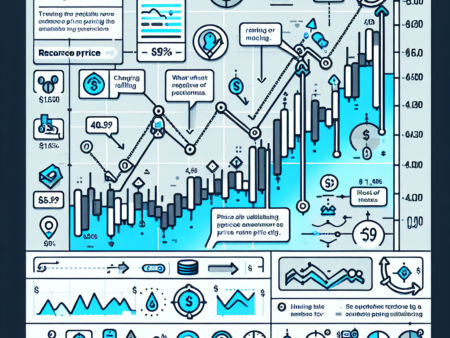Trading Techniques and Strategies
Introduction
In the dynamic world of financial markets, employing effective trading strategies is crucial for achieving consistent success. Whether you’re a novice trader or a seasoned investor, understanding and implementing the right techniques can significantly enhance your trading performance. This comprehensive guide explores various trading techniques and strategies, providing actionable insights to help you navigate the complexities of the financial markets.
Fundamental Analysis
Understanding Market Trends
Fundamental analysis involves evaluating a security’s intrinsic value by examining related economic and financial factors. By analyzing indicators such as earnings, interest rates, and economic growth, traders can make informed decisions about potential investments.
Actionable Insight: Stay updated with economic calendars and financial news to identify trends that could impact your trades. For instance, positive earnings reports can signal a good time to buy, while negative news might indicate a sell.
Analyzing Financial Statements
Delving into a company’s financial statements—such as the income statement, balance sheet, and cash flow statement—provides a clear picture of its financial health.
Actionable Insight: Look for companies with strong fundamentals, such as consistent revenue growth, low debt levels, and healthy profit margins. These indicators often lead to sustainable long-term growth.
Technical Analysis
Chart Patterns
Technical analysis relies on historical price data and chart patterns to predict future market movements. Common patterns include head and shoulders, double tops and bottoms, and triangles.
Actionable Insight: Learn to identify key chart patterns and utilize them to make strategic entry and exit decisions. For example, a breakout from a triangle pattern could indicate a significant price movement.
Indicators and Oscillators
Indicators such as Moving Averages, Relative Strength Index (RSI), and Moving Average Convergence Divergence (MACD) help traders gauge market momentum and potential reversal points.
Actionable Insight: Combine multiple indicators to confirm signals. For instance, using RSI alongside MACD can provide a more reliable indication of overbought or oversold conditions.
Trading Styles
Day Trading
Day trading involves buying and selling securities within the same trading day, capitalizing on short-term price movements.
Actionable Insight: Utilize high liquidity markets and implement strict risk management practices to mitigate potential losses. Tools like stop-loss orders are essential in day trading.
Swing Trading
Swing trading targets shorter-term gains over several days to weeks, leveraging market swings to maximize profits.
Actionable Insight: Focus on technical indicators and market sentiment to identify optimal entry and exit points. Combining this with fundamental analysis can enhance trade reliability.
Scalping
Scalping is a high-frequency trading strategy that aims to make numerous small profits throughout the trading day.
Actionable Insight: Ensure you have a robust trading platform with low latency to execute trades swiftly. Scalping requires discipline and quick decision-making abilities.
Risk Management
Position Sizing
Determining the appropriate amount of capital to allocate to each trade is vital in managing risk.
Actionable Insight: Use position sizing techniques to ensure that no single trade can significantly impact your overall portfolio. A common approach is to risk only 1-2% of your capital on any given trade.
Stop-Loss and Take-Profit Orders
Implementing stop-loss orders helps limit potential losses, while take-profit orders secure gains once a trade reaches a predetermined level.
Actionable Insight: Strategically place stop-loss and take-profit orders based on your analysis to maintain discipline and prevent emotional decision-making.
Advanced Strategies
Options Trading
Options trading provides the flexibility to hedge against potential losses or speculate on market movements with limited risk.
Actionable Insight: Start with basic options strategies like covered calls or protective puts before moving on to more complex techniques. Understanding the Greeks (Delta, Gamma, Theta, Vega) is essential for effective options trading.
Algorithmic Trading
Algorithmic trading uses automated systems to execute trades based on predefined criteria, enhancing speed and efficiency.
Actionable Insight: Develop or utilize existing trading algorithms that align with your trading strategy and risk tolerance. Continually backtest and refine your algorithms to adapt to changing market conditions.
Conclusion
Mastering a variety of trading techniques and strategies is fundamental to achieving success in the financial markets. By combining fundamental and technical analysis, adopting suitable trading styles, managing risk effectively, and exploring advanced strategies, traders can enhance their performance and navigate market volatility with confidence. Remember, continuous learning and adaptation are key components of sustained trading success.
Frequently Asked Questions
- What are the best trading strategies for beginners?
- For beginners, swing trading and trend following are often recommended due to their balance between risk and potential reward. These strategies allow traders to learn market dynamics without the high-pressure environment of day trading.
- How important is risk management in trading?
- Risk management is crucial in trading as it helps protect your capital from significant losses. Effective risk management strategies, such as position sizing and stop-loss orders, ensure that no single trade can drastically impact your overall portfolio.
- Can technical analysis be used in all market conditions?
- While technical analysis is a powerful tool, its effectiveness can vary based on market conditions. It is most effective in trending markets and may be less reliable during highly volatile or sideways markets. Combining it with fundamental analysis can enhance its effectiveness.
- What is the difference between day trading and swing trading?
- Day trading involves executing multiple trades within a single day to capitalize on short-term price movements, while swing trading targets profits over several days to weeks by leveraging medium-term market swings.
- Are advanced strategies like algorithmic trading suitable for all traders?
- Advanced strategies like algorithmic trading require a solid understanding of programming and market analysis. They are best suited for traders who have gained substantial experience and are comfortable with technology and data analysis.
Disclaimer
The information provided in this article is for informational purposes only and should not be construed as financial or investment advice. It is always recommended to conduct thorough research and consult with a professional advisor before making any investment decisions.


















